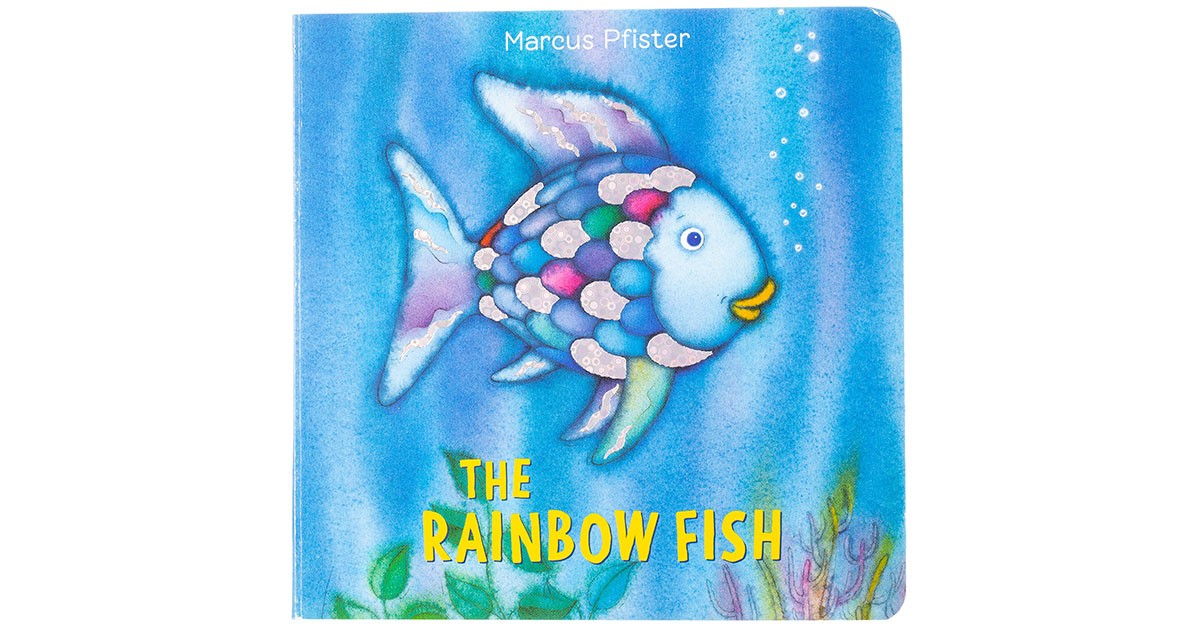Parents and Educators are banning the 1990s book The Rainbow Fish because of its "toxic message."
The Rainbow Fish is a beloved picture book that tells the tale of a fish with sparkling scales who is too proud to be friends with the other fish but ultimately relinquishes them and makes friends.
Some people think the moral of the story is just to share and be kind to others.
A Publishers Weekly reviewer called the book a "cautionary tale about selfishness and vanity". Its central theme is about the importance of sharing with others and how that leads to happiness.
Others interpret it as a tale about having to alter yourself in order to fit in.
A two-minute video that US Teacher Danny Vuong posted on TikTok and received 72k views explains why he doesn't like the book.
He explains that the Rainbow Fish was "full of himself" since he swam passed the other fish who wanted to play because he "felt he was better," despite the author's good intentions.
Mr Vuong thought he had a right to refuse to give one of his scales to a small fish when Rainbow Fish requested it.
He claims that he is not required to sacrifice a part of himself for anyone.
This is where, in my opinion, the story would have been stronger if it had emphasised Rainbow Fish's character defect—namely, the fact that he lacked humility.
The other fish decided not to play with Rainbow Fish when he refused to give up his scales, which made it seem more like the other fish didn't accept him than that they were reacting to his obstinate behaviour.
A suggestion that the Rainbow Fish give up his scales to the other fish is made by an octopus later in the book. He shares, and they accept him after that.
According to Mr Vuong, "He had to alter to win people over, therefore he achieved acceptance when he gave up elements of who he was."
"While I believe it conveys a toxic message—the scales could be interpreted as a metaphor for pride—this is typically read to children of primary school age, and at that age, they will interpret Rainbow Fish giving out scales as them needing to give something important to make friends," the author says.
Nursingtheoryprof, a different TikTok user, retweeted Mr Vuong's video and commented that the book was prohibited in her home. There have been one million views of her video.
We tossed this one away after receiving it as a gift since we realised it essentially implied that he needed to share pieces of himself with others to establish friends.
Abby, a 31-year-old librarian, posted a video about the book on Tiktok and referred to it as her "nemesis."
On TikTik, a range of viewpoints about the message the book conveys to young children were aroused by the videos.
Sharing is supposed to be pleasant. But in reality, it's about sharing little pieces of oneself to provide happiness to others," one individual wrote.
Another individual expressed their relief, "THANK YOU. When I declare that this book isn't good, people look at me like I'm insane.
Others concurred. Totally concur. Not a fan of this book.
One user, however, said that "The other fish only liked him because he was gorgeous and they pushed him to give up what made him exceptional because they wanted it for themselves.
In the June 2019 issue of Reason magazine, libertarian journalist Matt Welch wrote an article titled "Don't Be Like the Rainbow Fish", in which he described the ways in which the Rainbow Fish in the book acted quite differently from that of the author of the book, Marcus Pfister, in Welch's view. Welch derides the process in which the Rainbow Fish in the book gave away its scales, and become "colourless", as contrasting starkly with the colourful methods and materials Pfister himself would have used in order to produce the actual book, which ultimately went on to sell millions of copies. Welch said, "Whereas Rainbow Fish achieves transcendence through literally becoming colourless, the exact opposite was the case for The Rainbow Fish. Using an expensive and novel combination of holographic foil stamping and watercolour, the Swiss-born Pfister and his publisher, NorthSouth Books, produced a striking visual package that proved irresistible. 'The effect of the stamping was so nice that all the bookshops here in Switzerland put it in the windows,' Pfister recalled in a 2013 interview with Publishers Weekly. 'We decided that I'd get only 50 per cent of my usual royalties for the book, and only that way was it possible to make it work.'"
Former conservative radio host Neal Boortz said that The Rainbow Fish in his view was, "...one of the biggest pieces of trash children's books ever published" for similar reasons to that of Welch, as Welch states in the Reason article, "...[the Rainbow Fish] only gets truly ostracized because he won't hand over his body parts on demand, in the name of equality."
Some critics have also previously asserted that The Rainbow Fish "promotes socialism", or collectivist values. From this perspective, it has been alleged that "...the message this book sends to children about envy, entitlement, uniformity and mediocrity [is problematic]. Not to mention the bullying and shaming used by the scaleless fish to get what he wants.". Ira Stoll, another critic of The Rainbow Fish on anti-socialist grounds, claims that Amazon.com reviews of the book were evenly divided between those in favour of the book (and the values that it promotes), and those reviews that were more critical, including, "For a flavour of the one-star reviews, one is titled, 'Great for the young communist and socialist.'"
According to Wikipedia, the plot states:
The story is about a small rainbowfish with shiny, multi-coloured scales. He has blue, green, purple, and pink scales. Interspersed with these colourful scales are shiny, holographic scales which are his favourites. The other fish from his shoal also have scales, but only scales matching their real colours. However, they wish that they had shiny silver scales just like Rainbow Fish. One day, a small blue fish who envied the shiny silver scales asks the Rainbow Fish if he could have one of his. The Rainbow Fish refuses in a rude manner. The small blue fish tells all the other fish that The Rainbow Fish was being rude, and as a result, the other fish do not want to play with him anymore.
His only remaining friend, the starfish, tells him to go visit the wise octopus for advice. When he goes to the cave where she lives, he sees Wanda the octopus. Wanda (in a deep voice) says that she has been waiting for him. Then she explains that the waves have told her his story. Then, she gives The Rainbow Fish her advice: He must share his scales with the other fish. She continues that he might no longer be the most beautiful fish after that, but he will discover how to be happy. The Rainbow Fish tries to say that he cannot share his favourite scales, but Wanda disappears in a cloud of ink.
When he encounters the little blue fish for a second time, The Rainbow Fish shares one of his precious silver scales and sees the little fish's joy. With that one shiny scale gone, he immediately feels much better. Very soon, the Rainbow Fish is surrounded by the other fish requesting scales and he shares one of his shiny silver scales with each of them. Soon, everyone in the ocean has one shiny scale, including The Rainbow Fish. The Rainbow Fish is finally happy even though he only had one shiny scale left.
References:
Toxic message’: Teachers and parents are cancelling the 90s classic The Rainbow Fish, Laura Aubusson, Kidspot News, January 10, 2023
The Rainbow Fish Wikipedia







 On 10 December 2025, the Fair Work Commission issued a major determination affecting the Children’s Services Award 2010 (MA000120). These changes form part of the
On 10 December 2025, the Fair Work Commission issued a major determination affecting the Children’s Services Award 2010 (MA000120). These changes form part of the Over the next five years, educators across the sector will see steady, structured wage increases designed to lift pay to the new benchmark rates for
Over the next five years, educators across the sector will see steady, structured wage increases designed to lift pay to the new benchmark rates for The Fair Work Commission has introduced important changes to how cooks are classified and paid under the Children’s Services Award 2010. These changes recognise that
The Fair Work Commission has introduced important changes to how cooks are classified and paid under the Children’s Services Award 2010. These changes recognise that At the centre of this case is an incident captured on CCTV at an early learning service in Bathurst, where 18‑year‑old educator Hayley Kelleher grabbed
At the centre of this case is an incident captured on CCTV at an early learning service in Bathurst, where 18‑year‑old educator Hayley Kelleher grabbed